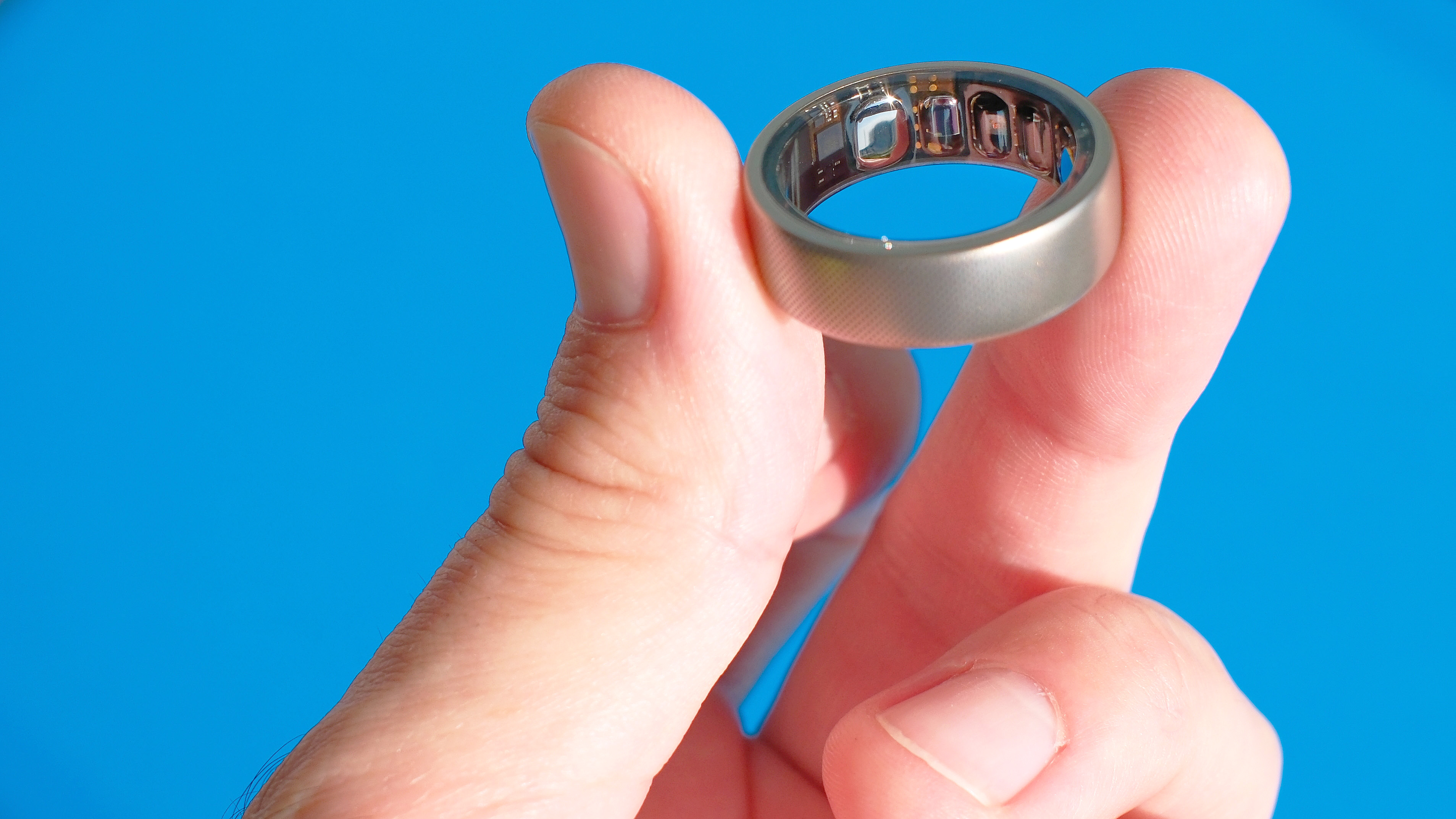
The Amazfit Helio Ring is a wellness-tracking smart ring with no buttons, screens or physical controls to speak of. Health monitoring sensors along the inside beam data directly to a paired Apple or Android device running the brand's companion Zepp Health app; it also shares data with the Apple Health and Google Fit apps.
Like many of the best smart rings, the Helio Ring can be used for activity tracking but is limited to just four sports modes and there’s no auto-detection for workouts. Instead, Amazfit intends for you to pair the Helio Ring with one of the brand's flagship smartwatches, like the Amazfit Balance, for monitoring physical activity.
Unlike the popular Oura Ring, this first-generation smart ring requires no recurring subscription cost for features like keeping tabs on energy levels, sleep, stress, fitness recovery and menstrual health. This is the same approach Samsung took with the Galaxy Ring.
I wore and tested the Helio Ring’s features for over a month and found it to be a decent alternative to some of the bigger names in the smart ring space. Sleep insights proved particularly useful while the device’s health data overall matched up nicely in my testing against other popular wearables.
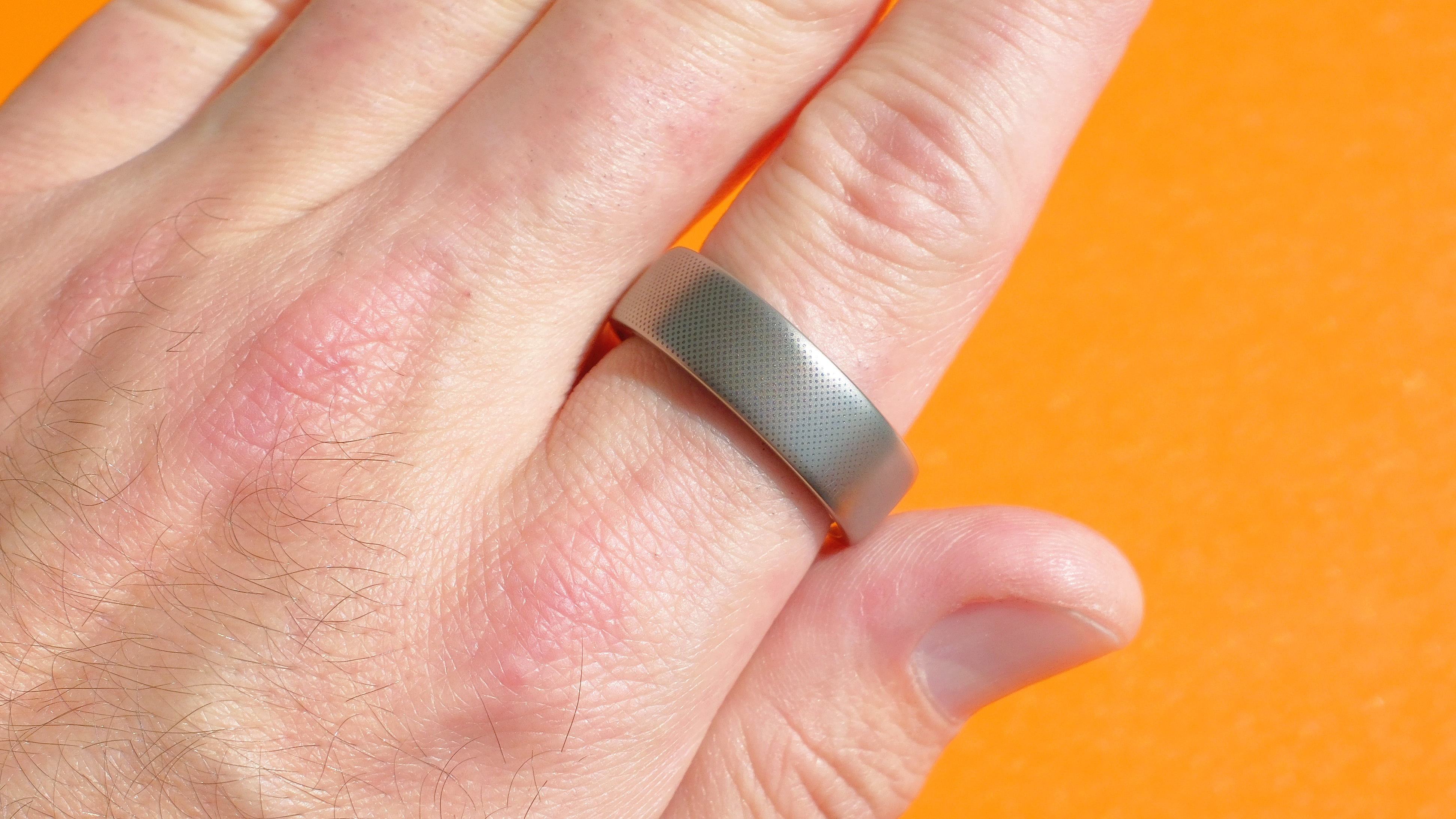
Amazfit Helio Ring review cheat sheet
- Helio Ring is $199 through Amazfit directly
- Only available in a titanium finish, sizes 8, 10 and 12
- Weighs less than the Oura Ring but more than the Samsung Galaxy Ring
- Up to four days of battery life; less than two hours to charge
- Offers similar health sensors to the competition to track sleep, activity, recovery, menstrual health and stress
- Well-constructed with a titanium alloy outer and 100 meters of water resistance; finish scratches somewhat easily
- Lightweight, comfortable and pretty sleek
Amazfit Helio Ring review: specs compared
Amazfit Helio Ring review: price and availability
The Amazfit Helio Ring originally launched at $299 but Amazfit dropped the price to $199 in late September 2024. Sold directly through Amazfit, it comes in only a Titanium finish in sizes 8, 10 and 12.
In addition to the (free) companion Zepp app, Helio Ring users get free unlimited access to the premium Zepp Aura app, which promises deeper insights into your sleep data driven by artificial intelligence. It also offers audio playlists to help you fall asleep along with sleep and relaxation exercises.
Helio Ring users also get free access to the Zepp Fitness app where you'll find advanced training analysis, weekly and monthly workout reports, and a 24/7 chatbot that can answer a wide range of sports-related questions.
Amazfit Helio Ring review: design
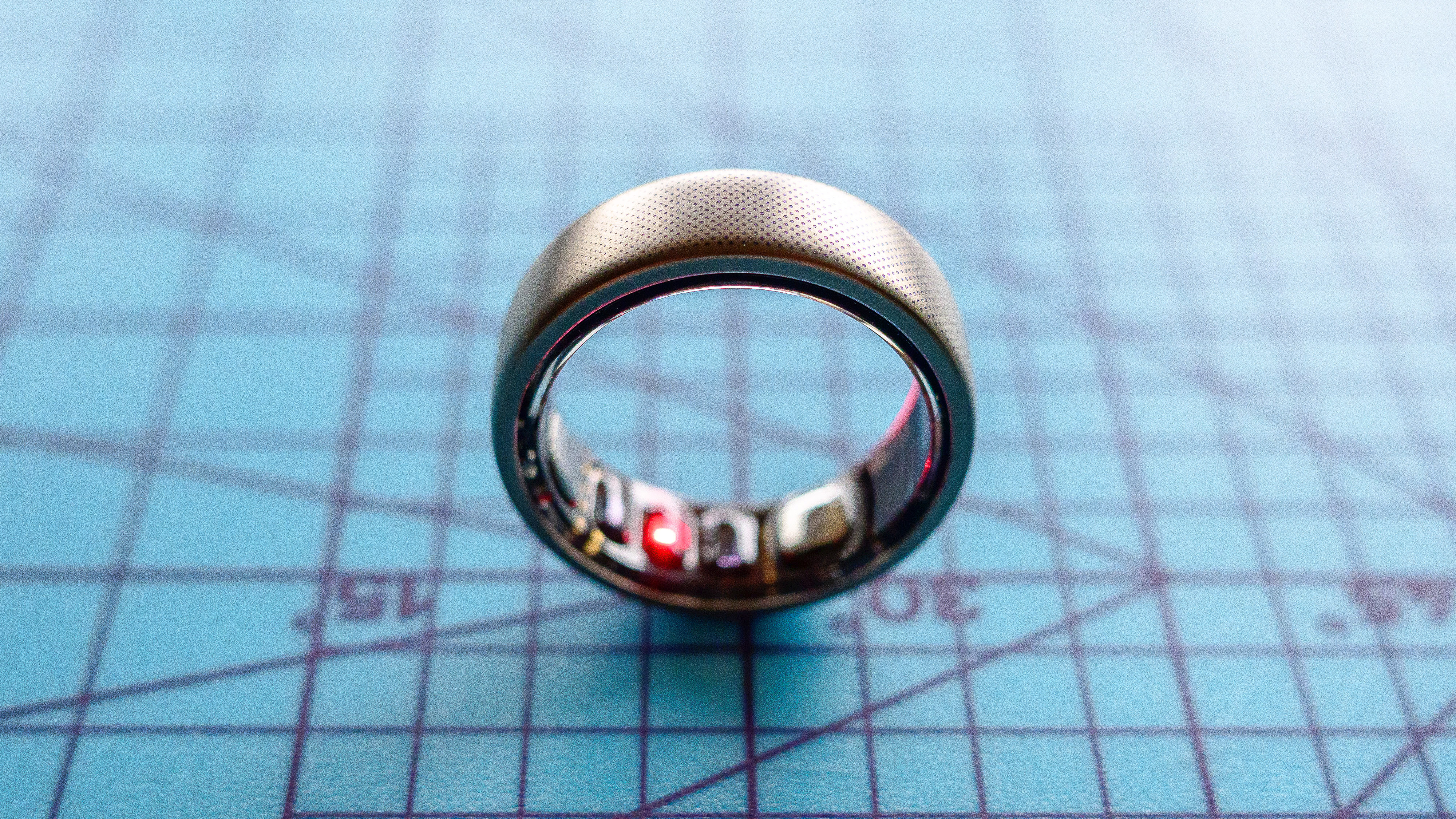
The exterior of the Helio Ring is titanium alloy, the inside is plastic. Just 2.6mm thick and weighing around 4 grams, the ring is light and, as I found when I first put it on, quite comfortable to wear, even to bed. It's also a little lighter than the Oura Ring Gen 3 but heavier than the Samsung Galaxy Ring,
A vertical line on the exterior indicates where the sensors are located. For optimal tracking, that line should face the inside of your finger, ideally the index, middle or ring. In dim lighting, however, it can be hard to spot said indicator.
The Amazfit Helio Ring is well-constructed and feels like it will last for the long haul. In under a week, it's survived countless bumps and knocks. It even fell out of my pocket and rolled across a marble floor with no apparent damage.
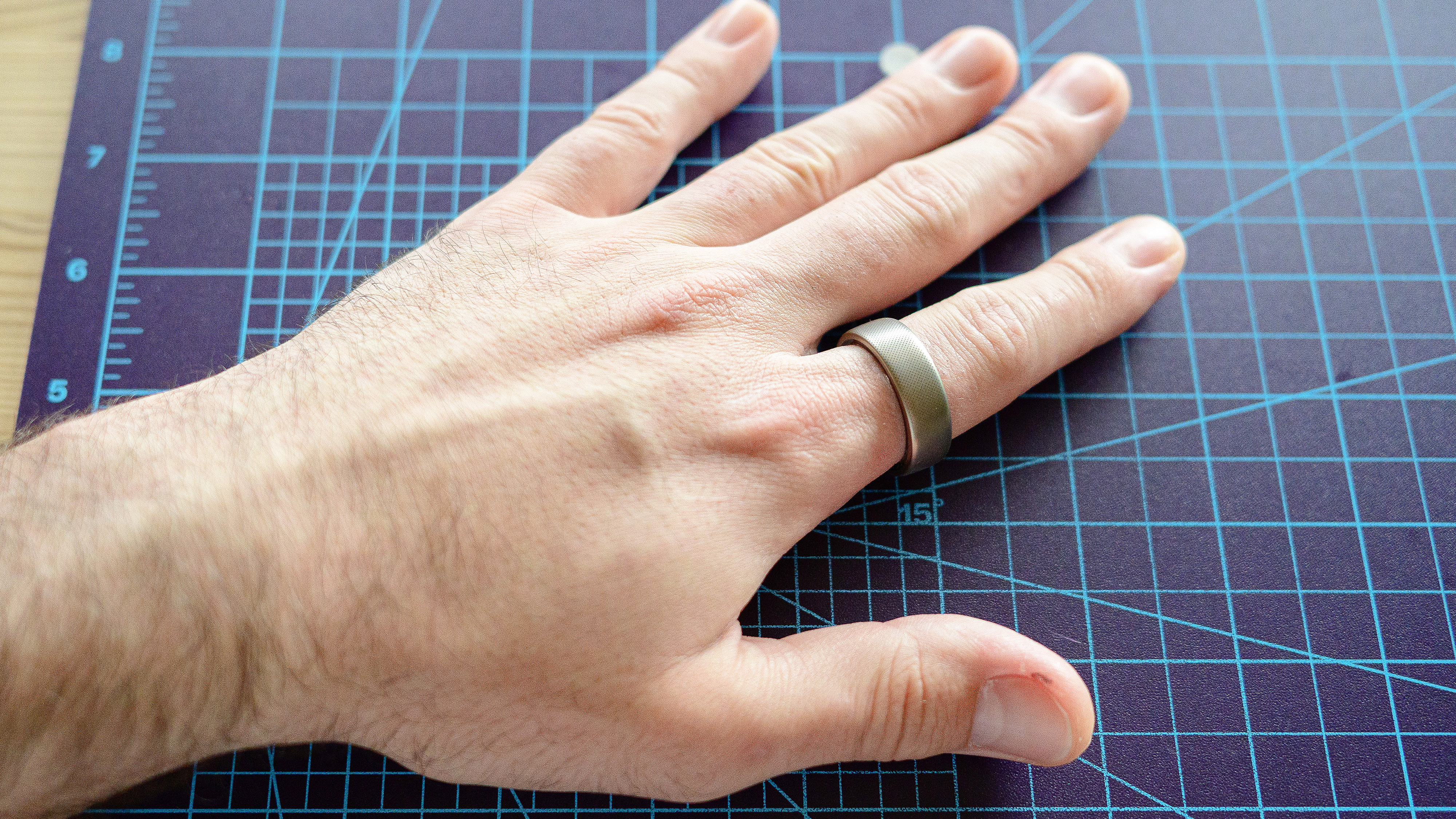
That said, it scratches a tad easy. In just under five days, I had two noticeable abrasions on it. Did I wear it while washing my car, riding my bike, doing some woodworking and cleaning out my outdoor space? Yes to all.
So, perhaps I'm just hard on rings. In the interest of full disclosure, this is the first time I've worn a ring of any kind, smart or not, in decades.
Like the Oura Ring and Galaxy Ring, the Helio Ring has 100 meters of water resistance, which is suitable for most water-based activities outside of serious scuba diving. Design-wise, there's not much to speak of aside from a very subtle dimple pattern on the outer third of the ring meant to face your adoring public.
Amazfit Helio Ring review: health tracking
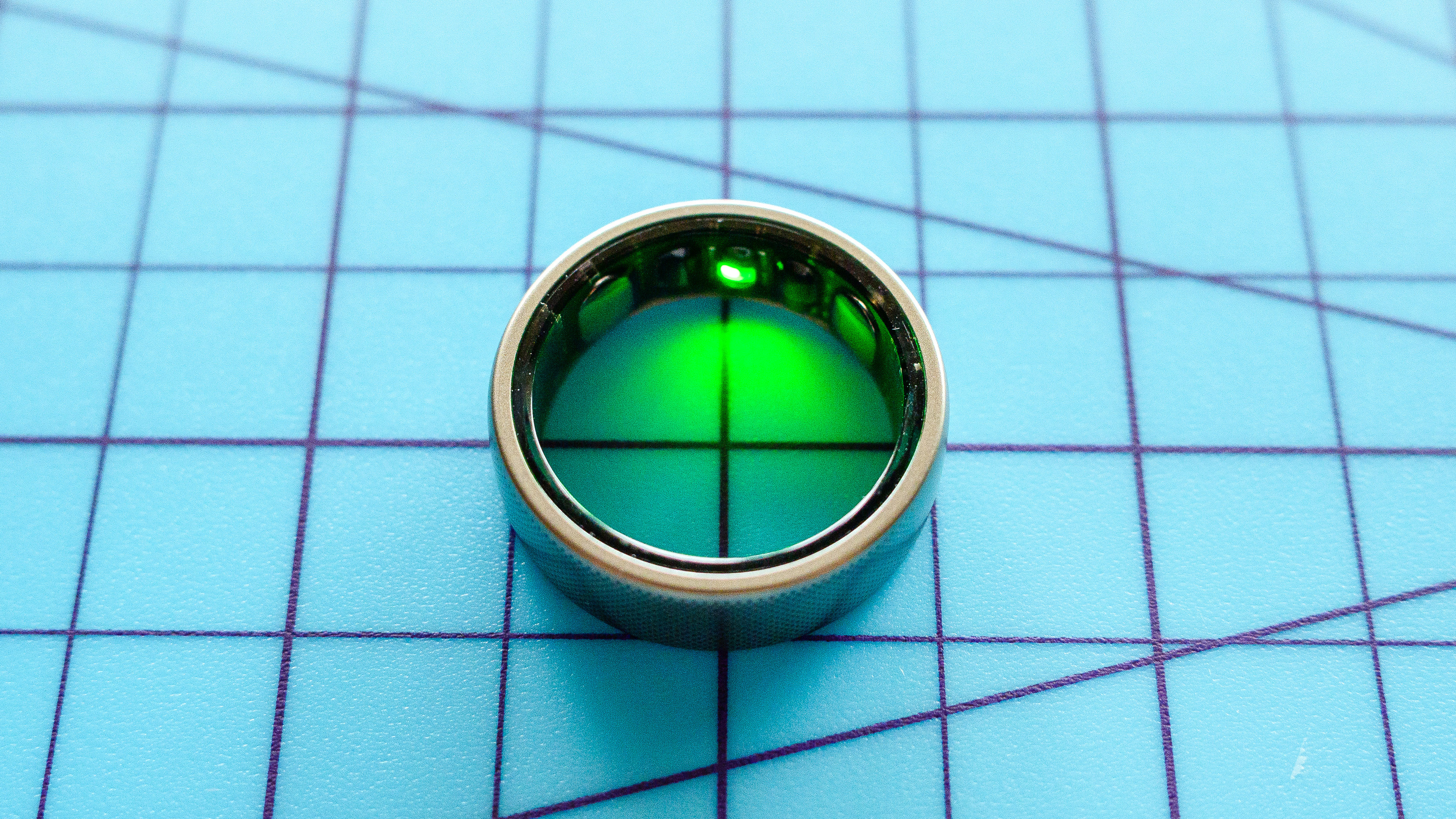
The Amazfit Helio Ring boasts a similar set of health monitoring tech to other top-shelf smart rings, like the Oura Ring and Galaxy Ring, including a heart rate, blood oxygen, body temperature, EDA, and ECG sensor along with an onboard gyroscope and accelerometer.
Of course, to make the most out of this tiny but mighty tech, it’s imperative that your Helio Ring fits correctly. Too loose of a fit and you may end up with some wonky metrics.
All of the device’s recorded data and insights are located in the free companion Zepp health app but the organization of data is mediocre at best.
Core metrics in the Zepp app feel somewhat jumbled and occasionally overly dumbed down — body temperature variations, for example, are recorded throughout the night while you sleep but that data isn’t made accessible. That said, the Zepp app does show you how your average body temp varies from night to night.
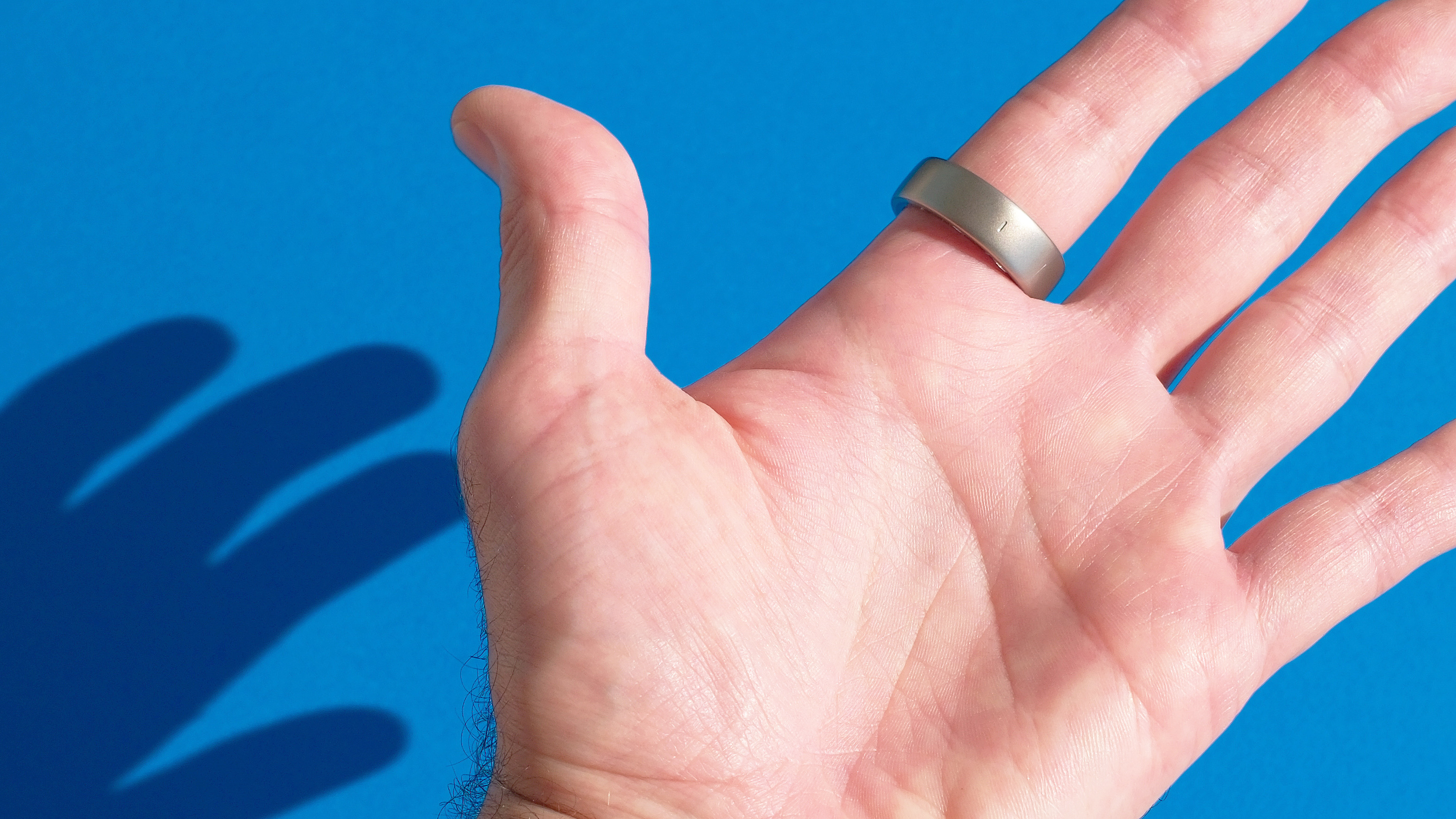
The main page of the Zepp app is customizable, which I appreciate, and the Helio Ring syncs up with the app quickly and automatically when the app is opened.
Having just come off testing the Samsung Galaxy Watch 7 — which uses the same free Samsung Health app as the Galaxy Ring to report sleep data — I really missed seeing insights into my average nightly breaths per minute, body movement data and whether or not snore detection was triggered. The Galaxy Ring companion app also provides greater insights into blood oxygen levels while you sleep and a few other key metrics.
Simply put, you’ll get more detailed and digestible sleep data from the Galaxy Ring than the Helio Ring. But, that’s not to say the Zepp app’s sleep data is worthless: I still found the Helio Ring’s sleep data valuable.
Also, as someone who really hates wearing a smartwatch to bed — though the Galaxy Watch 7 wasn’t that bad — a finger-based wearable is a tempting alternative for me, even more so when you consider the fact most smartwatches require a nightly recharge and smart rings don’t. So, yeah. The Helio Ring is better for sleep tracking right out of the gate than any smartwatch I’ve tested because it’s not a pain in the butt to deal with.
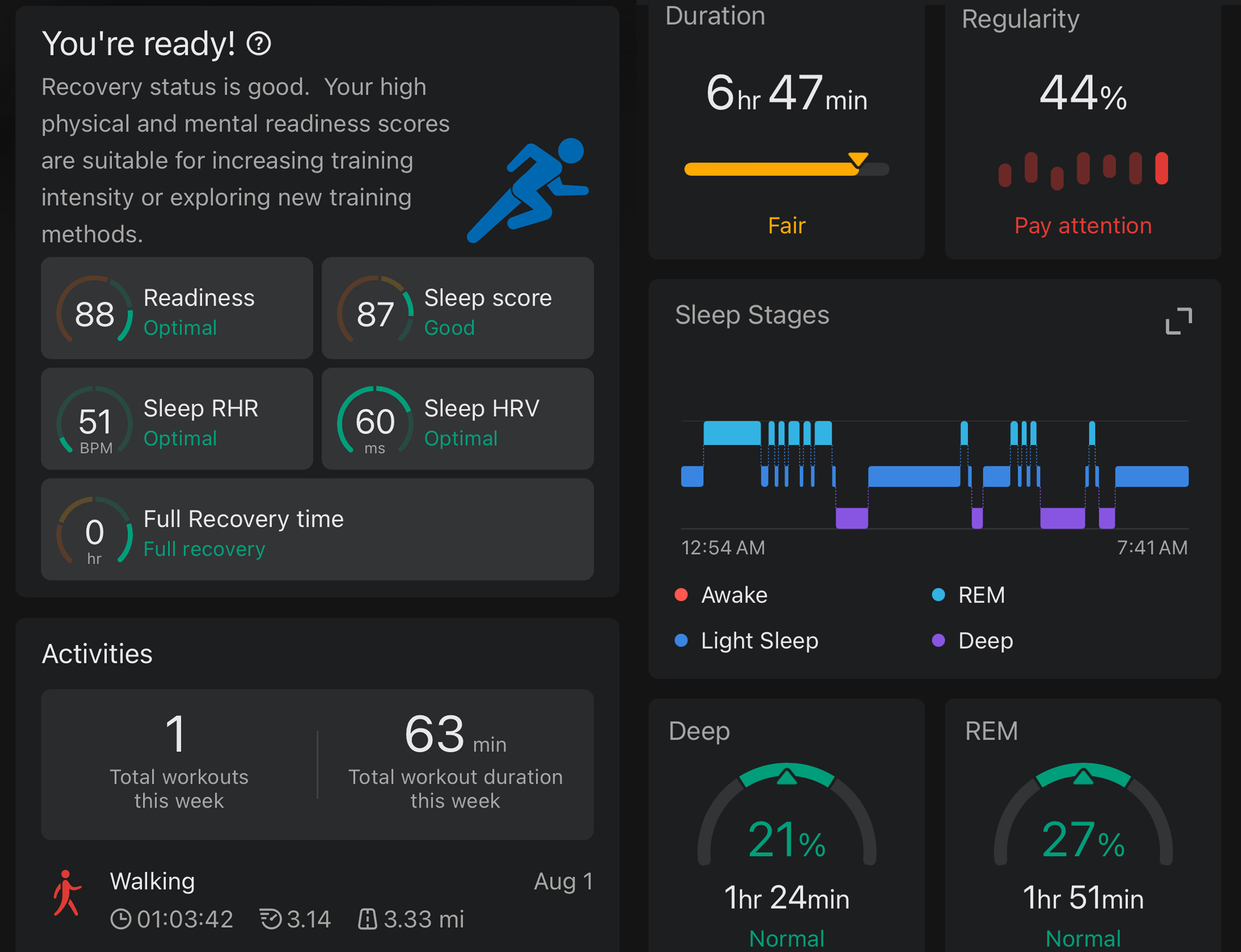
Each morning, your sleep report includes details on the duration of your rest and how it compares to your established sleep habits. For example, I tend to get eight hours or more of sleep a night but on a rare occurrence when that was closer to six and a half, my Sleep Regularity score was particularly low: 46%, and came with the suggestion to ‘pay attention,’ which I did.
Like most sleep trackers, the Helio Ring breaks down your time spent in different sleep cycles, including light and deep sleep, along with REM. You can also see how your sleep quality compares to other users. For example, last night I spent 21% of my sleep time in REM, which is normal (though, not ‘optimal’) and intriguingly, longer than 64% of other users.
The Helio Ring additionally tracks your heart rate and breathing quality while you sleep and provides morning reports on each. Over a couple weeks of wearing the device, my average nightly heart rate captured by the Helio Ring was a near match with other sleep-tracking devices I’ve been testing, which I found encouraging.
Breathing quality, which looks for signs of an obstructed airway or abnormal respiratory patterns, reports how often such occurrences are detected and how that compares to previous nights’ monitoring. The device also tracks if you wake up in the middle of the night, and if so, for how long.
All of this info gets analyzed and factors into your daily Sleep score, which is on a scale from one to 100. Similar to Garmin’s Body Battery and Samsung’s Energy score, the Helio Ring also presents a daily Readiness score out of 100.
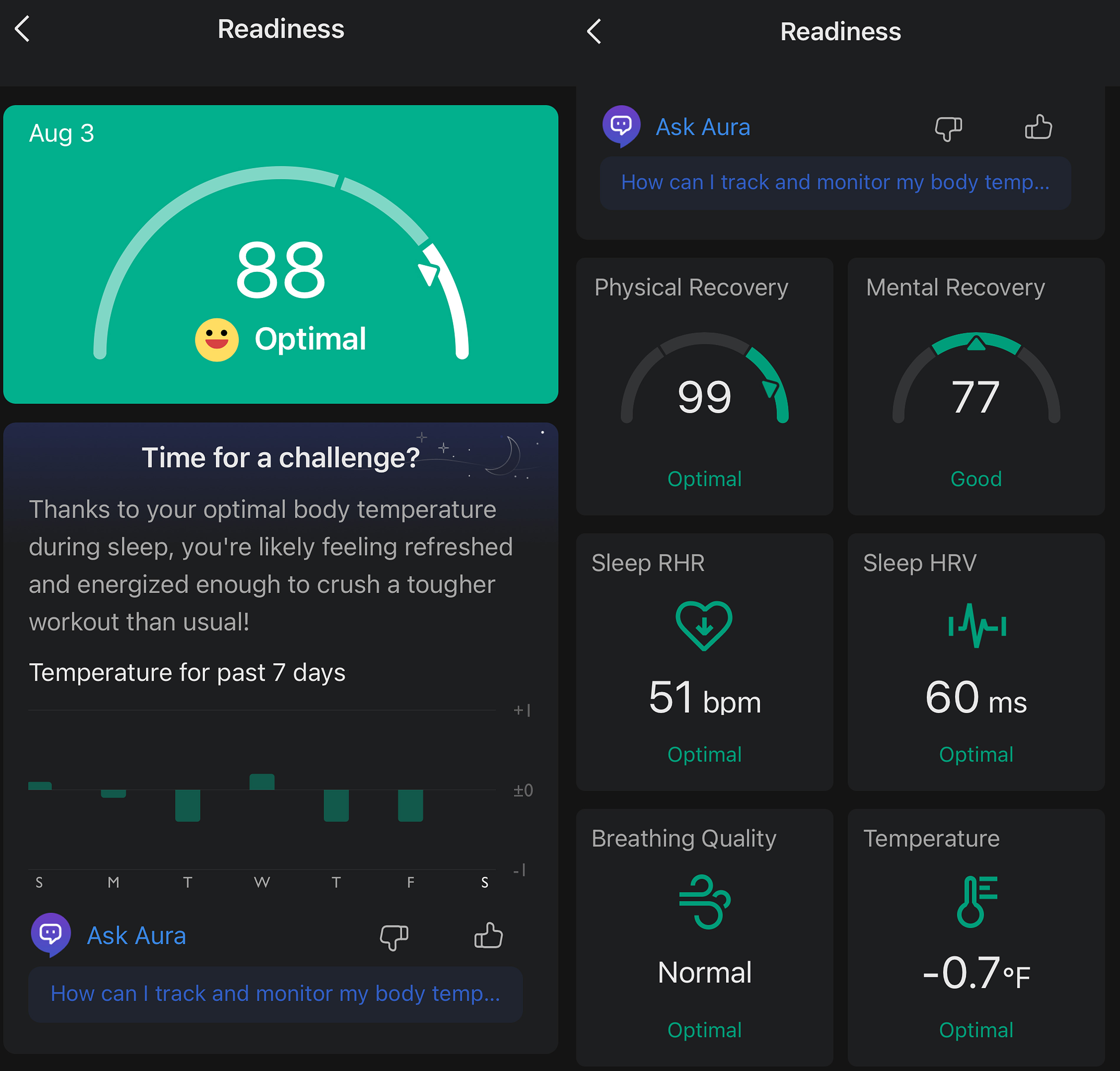
The Readiness metric takes into account the previous night’s resting heart rate (RHR), heart rate variability (HRV) — or the amount of time between heartbeats — breathing quality and body temperature to assess whether or not you’re in good condition to take on the day full steam ahead or need to take it easy and rest.
Other aspects of your morning report include a measure of needed recovery time from prior workouts. For instance, if I logged a 20-mile bike ride the day before, the Helio Ring may advise me to continue resting for another ten hours before taking on another physically demanding workout.
The Helio Ring also boasts nap detection. However, every time it logged one of my afternoon snoozes, the data was accompanied by a warning against napping too much, which makes me less inclined to wear the Helio when I’m catching a midday wink.
With an emphasis on monitoring your rest and recovery, fitness tracking is a lesser priority. As a result, the Helio Ring only supports tracking four workout types: walking, running, cycling and treadmill. Why so few? Almost certainly to encourage you to shell out for the additional companion Amazfit smartwatch.

And, while the device will keep track of your total steps taken for the day, if you want detailed insights into a long walk or hike, you’ll need to manually open the Zepp app and turn on tracking for the endeavor. There is no auto workout detection, something I was disappointed to learn after wearing the Helio Ring for the entirety of an epic 15+ mile bike ride.
Post-logged workout, you get similar stats to any other fitness tracker including details into your distance covered, pace, average and max heart rate, elevation gained, calories burned and heart rate zones. Assuming it wasn’t a treadmill workout, you’ll also get a map of your route based on your phone’s GPS data. Forgot your phone at home? No map for you.
I tested the Helio Ring while walking and biking against some of the best fitness trackers available, including the Garmin Forerunner 165, Apple Watch SE 2022 and Galaxy Watch 7 with excellent accuracy results across the board. The Helio Ring even beat the Garmin in a 5,000-step walk test.
You can also use the Helio Ring for women’s health tracking. Using the onboard body temperature sensor and some basic info inputted by the user, the Zepp app will try to predict the start of your menstrual cycle, fertility periods and ovulation days. However, unlike the Oura Ring, this information can’t be shared with popular women’s health apps, like the Natural Cycles app, for additional insights.
Amazfit Helio Ring review: battery life
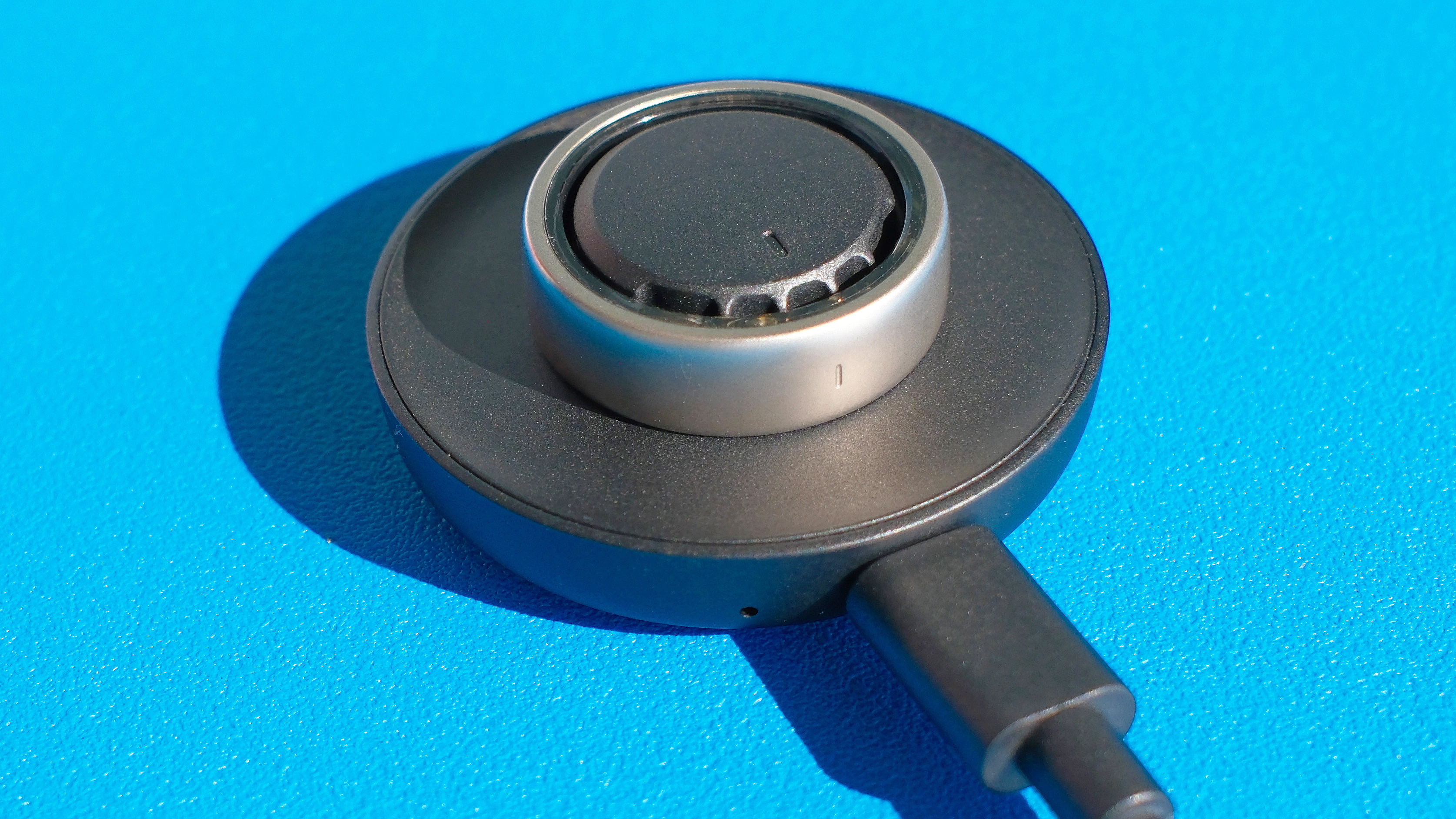
Amazfit says the Helio Ring should last between four and five days depending on which settings you have on. For example, the EDA sensor, used to keep tabs on stress, is off by default due to its power requirements. That said, I left it on for most of my testing and still easily managed four days between charges. By comparison, both the latest Oura Ring and Galaxy Ring last up to seven days.
The Helio Ring ships with a small USB-C charging cradle that looks similar to Oura’s. The Helio charges wirelessly when placed on the cradle, however, you have to line up the ring quite precisely to get it to start charging; it’s harder than it looks. That frustration aside, a full power-up takes less than two hours.
Should you buy the Amazfit Helio Ring?

For a first-generation product, I’m impressed with the Helio Ring: It’s well-built, unobtrusive, accurate and easy to set up and use. Of course, Amazfit has been churning out decent-quality and budget-friendly fitness trackers for some time. So, I guess I shouldn’t be too surprised by how dialed-in the Helio Ring experience is.
Ultimately, the device has a major advantage over either of its closest competitors. Next to the Oura Ring Gen 3, the Helio Ring features many of the same sleep and recovery insights but doesn’t require a monthly subscription. Compared to the Samsung Galaxy Ring, an Android-only product, the Helio Ring is OS-agnostic and a full $200 cheaper.
On the flip side, the Helio Ring doesn’t last as many days as either of those devices. And, the lack of sizing availability is a tad concerning, though Amazfit assures us more options are coming. I also much prefer Samsung’s sleep insights to Amazfit’s.
For a little more cash, there’s also the Ultrahuman Ring Air, which up until 2024, was the only worthy Oura Ring alternative, in my opinion. It similarly tracks sleep and recovery without a subscription but lacks the comprehensive menstrual health tracking features found on the Helio Ring.
Additionally, while data captured by the Helio Ring can be easily synced with other popular fitness apps including Strava, adidas Running, Google Fit, Apple Health and more, the same can’t be said of Ultrahuman’s metrics.







